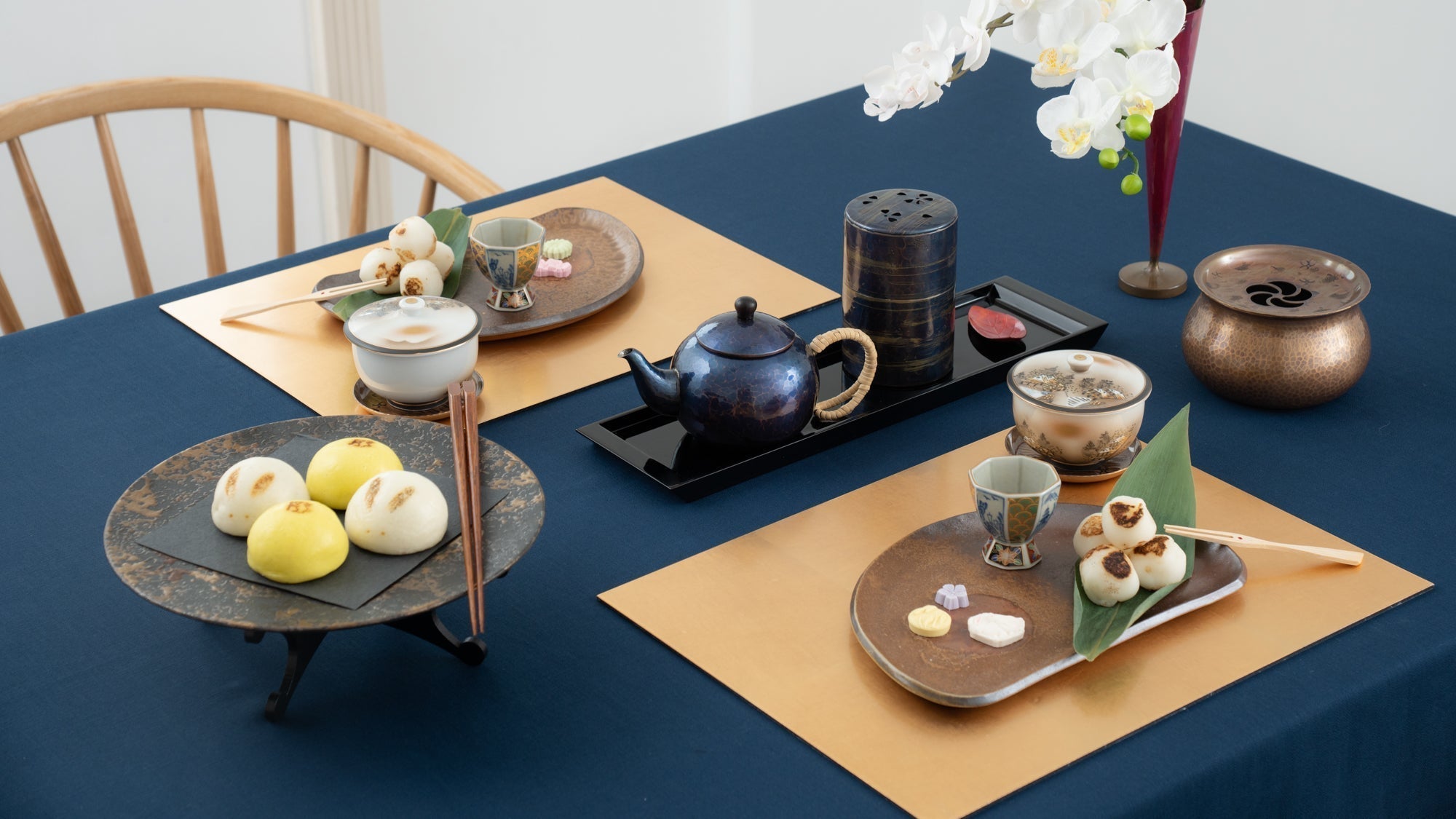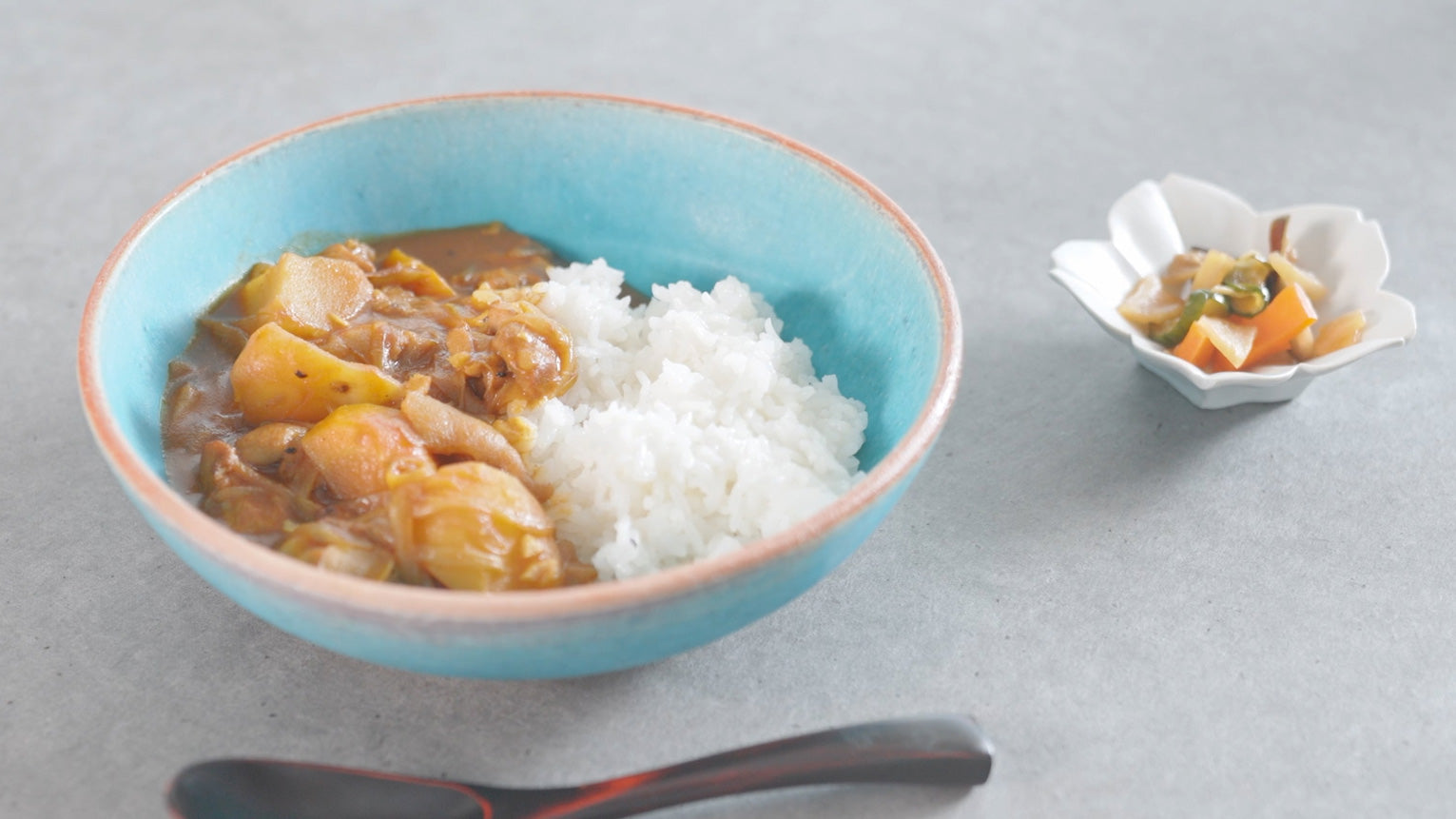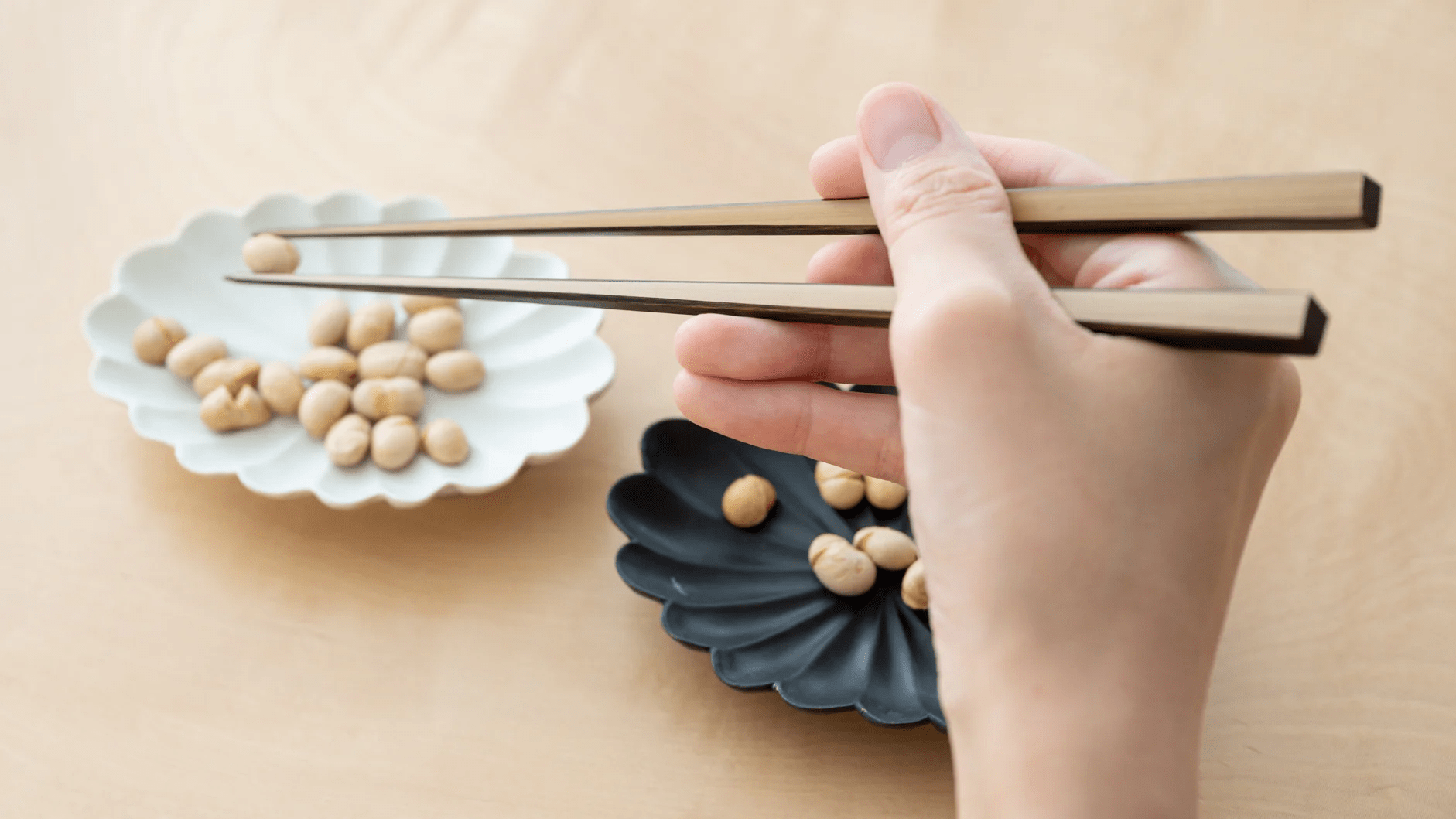
Dessert Time with Japanese Sweets
Written by Team MUSUBI
Enjoy "wagashi" and a refreshing cup of hot green tea with beautiful items from Seigado and Hozan Kiln for a sweet conclusion to a delicious meal.
table of contents
Feeling the seasons with wagashi
Many types of the wagashi were created following the growing popularity of “chado,” Japanese style tea making with matcha.
As seasonal elements play a large role in Japanese tea ceremonies, they also have a great impact on the design of Japanese confectionary as well.
To celebrate the autumn season, we plated round mochi-balls that are reminiscent of the full autumn moon, and autumn-colored dry sugar candies on the Hozan Kiln half-round plate that enhances the feel of autumn.
On the Hibino Kirin Mino Ware Round Plate, we placed four manju buns stamped with rabbits and rabbit ears.
Rabbits are another popular autumn motif in Japan. Folklore has it that on a full moon one can see a rabbit making mochi with a Japanese style mortar and pestle.

Stoneware with metal
The teapot is a stunning item with each small dent made by detailed hammering. The embossed surface adds glitter and shine to the pot under the lighting in a dining room.
The tea canister is also made of tin but almost looks like the bark from a cherry tree. This canister can be tightly sealed preserving the freshness of tea leaves.

Subtle gold
As the color tones of the other items on the table are austere dark hues, the gold gives light to the table and highlights the plates and tea cups.

Formal tea ware
Tea cups with lids are intended for formal occasions, but of course you can use them for a cozy meal at home. Express your warm hospitality with these finely crafted tea cups. The design of the tea cup is of a village in an old Japanese countryside. Underneath the beautiful golden clouds, old-fashioned Japanese houses and rich natural scenery are painted in detail.
Some tips on drinking tea with a tea cup with a lid.
Hold the cup with your left hand and lift the lid with your right hand. Make sure to open it towards you and let any droplets of water from the lid drip into the tea. Turn the inside of the lid upwards and place it on the right side of the tea cup. When you’re finished drinking your tea, put the lid back on the cup.

When serving Japanese tea with sweets, you don’t always have to use matching items like a complete tea set.
Be creative and do a mix-n-match setting like our tablescape to celebrate and honor the changing seasons.
Featured Item
Seigado

Seigado's workshop is located near the foot of Mt. Yahiko in Niigata Prefecture, where high quality copper was discovered about 300 years ago.
"Tsuiki'', the technique of hammering copperware was also developed around that time.
The manufacturing process involves many steps of delicate handwork and requires a great amount of skill. There are only a few craftsmen left in Japan who can produce first-class metal crafts.







Leave a comment
This site is protected by hCaptcha and the hCaptcha Privacy Policy and Terms of Service apply.